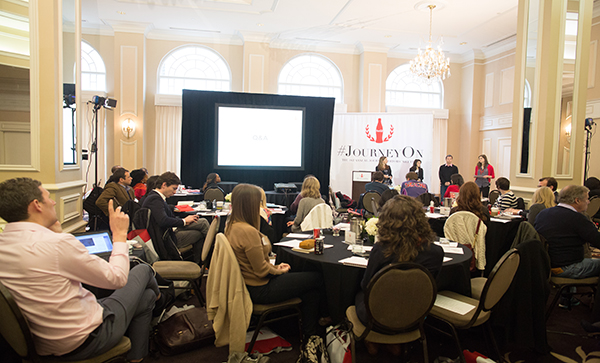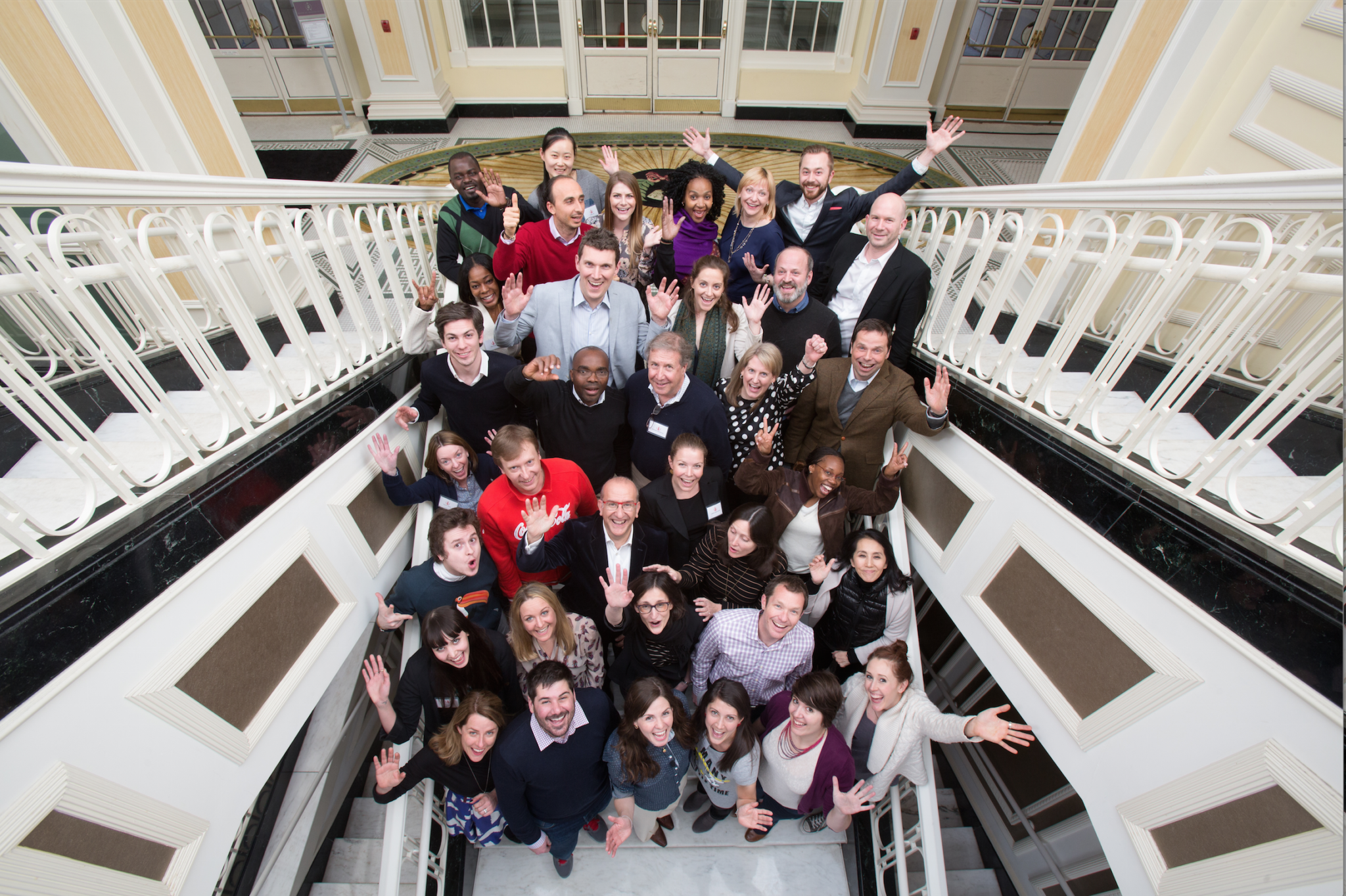Brands
A Look Deep Inside the Coca-Cola Newsroom: “If This Wasn’t Successful, We Would Pull the Plug”
Full disclosure: Coca-Cola is a client of Contently.
In mid-March, Coca-Cola editors from across the globe came to Atlanta for three action-packed days. Unlike many tourists in town, they weren’t there for spring break. They’d made the trip to Coke’s hometown for the first-annual international brand publishing summit: JourneyOn.
JourneyOn brought together heads of the international iterations of Coca-Cola Journey, the digital magazine the beverage giant launched in late 2012 with significant success. In 2013, Journey published 1,200 articles and attracted 13.1 million visitors who averaged an impressive 4:40 time spent per article, according to Journey Co-Managing Editor Jay Moye. With JourneyOn, Coke’s global team tried to spread its secret formula to the eight countries that had launched their own Journey sites, as well as a few others that would be up and running in the coming months, including Great Britain, Ireland, Spain, France, Italy, Austria, Nigeria, and Kenya.
“[JourneyOn] was kind of a hybrid training conference/networking event where we really provided a very nuts-and-bolts exercise of what makes a good story, how we publish, some of our processes, some of the legal ramifications that we have to navigate, etc.” explained Moye.
Coca-Cola’s editorial journey
It may seem odd for a brand to host an international storytelling summit, but in 2014, brands are finding themselves in unfamiliar territory. Eighteen months after launching their publication, Moye and the seven other members of the Coca-Cola Journey team have weathered the ups, downs, and uncertainties all new publishers face.
“We started out with the vision that we’d have about half Coke-branded content and about half non-Coke branded content,” he said. “The branded content we published did better than we thought it would.”
Those successful brand-focused stories included low-hanging fruit, like the story of how Coca-Cola created the modern-day Santa Claus, as well as more creatively ambitious efforts, like a re-imagination of what the disastrous New Coke launch of 1985 would look like in the social media age.
“It was a way of kind of marrying the past, Coke’s history, with current technologies, which I think was fun,” Moye said of the New Coke story. “I think it did well because it was a good story. … It was an interesting topic and approach people perhaps wouldn’t have expected from us.”
When it came to content that didn’t focus on the Coca-Cola brand, the Journey team’s understanding of what their audience wanted evolved quickly.
“At first, the vision for Journey was to be a bit higher brow, a bit more Harvard Business Review, talking about weighty issues that really impact the world and where Coke has a voice,” Moye said. “We certainly do cover those issues still today, but the focus has shifted a bit more towards lifestyle and culture. We realize that people expect fun, smart, happy stories from Coke.”
The Journey team was also somewhat surprised to discover two-thirds of their readers were under the age of 34—with the largest subsegment between 18 and 25. Conveniently, that demographic aligns with the company’s business goals.
“Clearly, we need to stay relevant to younger consumers around the world,” Moye added. “Journey’s content needs to appeal to a millennial audience.”
Inside the newsroom
The Coca-Cola Journey team is helmed by Ashley Brown, the company’s 35-year-old director of digital communications and social media whom Ad Age credits with thrusting Coca-Cola into the digital age. Journey is co-managed by Moye and Ashley Callahan, a former TV journalist. The staff also sports a social media editor, graphic designer, analyst, and a third editor. An Atlanta-based video crew produces Journey’s videos, and the team leans on freelance writers and photographers for its non-Coke focused content (which—full disclosure—Coca-Cola hires and manages via Contently).
Mimicking the cadence of a traditional newsroom, the team connects several times a week to plan Journey’s content. “We used to have those calls every day,” Moye said, “but we scaled that back as we got a nice publishing rhythm and a process in place.”
The Journey team taps Coca-Cola’s intranet for story ideas, as well as the company’s marketing campaigns, heritage, and more, but often finds creativity by reacting to what’s going on in pop culture at large. “Everything from World Water Day to the Oscars,” said Moye. “Anything that we can build content against that we know will capture search appetite and interest.”
And once a month, Moye and the team lead an international editorial call with the Journey sites across the globe.
Handling criticism
All new publications need to prepare to handle serious criticism—just ask Nate Silver and Ezra Klein, who have seen their ambitious new sites roasted in the media the past few months.
Coca-Cola and Journey haven’t been immune to that type of scrutiny. In February, Sparksheet’s Mark Higginson wondered, “Should Coca-Cola Quit Its Content Marketing Journey?” speculating that the low level of social media interaction with Journey content indicated Journey was a poor investment for the beverage behemoth:
“I reviewed a sample of 87 posts on the aforementioned Coca-Cola Journey site. To see whether people really are engaging with the stories, I documented the number of shares to Facebook, Twitter, and LinkedIn from each post.
I discovered the level of interaction was negligible: The average number of shares from a post to Facebook was 238, to LinkedIn, 103 and to Twitter, 42. Each post averaged eight comments and two-thirds of posts received no comments at all.”
Somewhat surprisingly, Ashley Brown, Journey’s team leader, responded in the comments, writing, “As any publisher will tell you, the surest measure of ‘engagement’ isn’t a social share–it’s time spent on the page consuming the content.”
In a lively back-and-forth exchange with Higginson that’s worth reading, Brown went on to note Journey exceeded their visits target by more than 2 million in 2013 and that repeat visitors are “way above 10 percent by several factors.”
“You asked why we’ve invested in Journey?” he wrote. “Because it’s working.”
How Coca-Cola measures success
So if social shares aren’t Coca-Cola’s benchmark for success, what is? In his comments on Sparksheet, Brown touched on visits and repeat visits, but emphasized time spent with content as the ultimate metric. “If someone spends 16 minutes on an article,” he wrote, “That’s a home run.”
The Journey team also pays close attention to bounce rate and is particularly excited about the success of Unbottled, the blog of quick-hitting content that lives within Journey. “Unbottled’s bounce rate is just over 10 percent, which is absolutely extraordinary for a blog,” Brown wrote.
In our interview, Moye explained the way Coca-Cola measures content goes even deeper: “We also assign an Expressions of Interest (EOI) score to each piece of content. This proprietary metric captures conversations and engagement by assigning a quantitative value based on referrals from social networks, shares, SEO traffic, and total visitors for an individual story.”
Pageviews, conversely, are used to measure reader interest in a topic, rather than the success of a story. “This helps us in shaping our content,” explained Moye.
The Journey Media Platform
“It was always our vision to really to create a media platform,” Moye said. “We call it the JMP, the Journey Media Platform. That includes our global site; our blog, Coca-Cola Unbottled; and our local editions around the world.”
It’s a lofty ambition, but one born out of necessity. Journey plans to expand to more than 30 countries over the next few years, and they need to give the marketers and writers in those countries a model they can sustain with limited training. Journey’s core eight-person team, after all, can’t run 30 different sites in a dozen different languages.
“There are several routines in place where we’re in touch with the international sites regularly, but we do not write content for all these sites,” Moye said. “They’re meant to have a local flavor or local ownership. It’s a bit of a franchise model.”
“[W]e’re a business, and if this wasn’t successful we would pull the plug,” Brown wrote on Sparksheet. “That we’re expanding this program as fast as possible should tell you something.”
What’s the deal with The Content Strategist? It’s something we created at Contently because we believe in a world where marketing is helpful, and businesses grow by telling stories that people love. Take advantage of our tools and talent and come build that world with us.
Image by Journey OnGet better at your job right now.
Read our monthly newsletter to master content marketing. It’s made for marketers, creators, and everyone in between.






